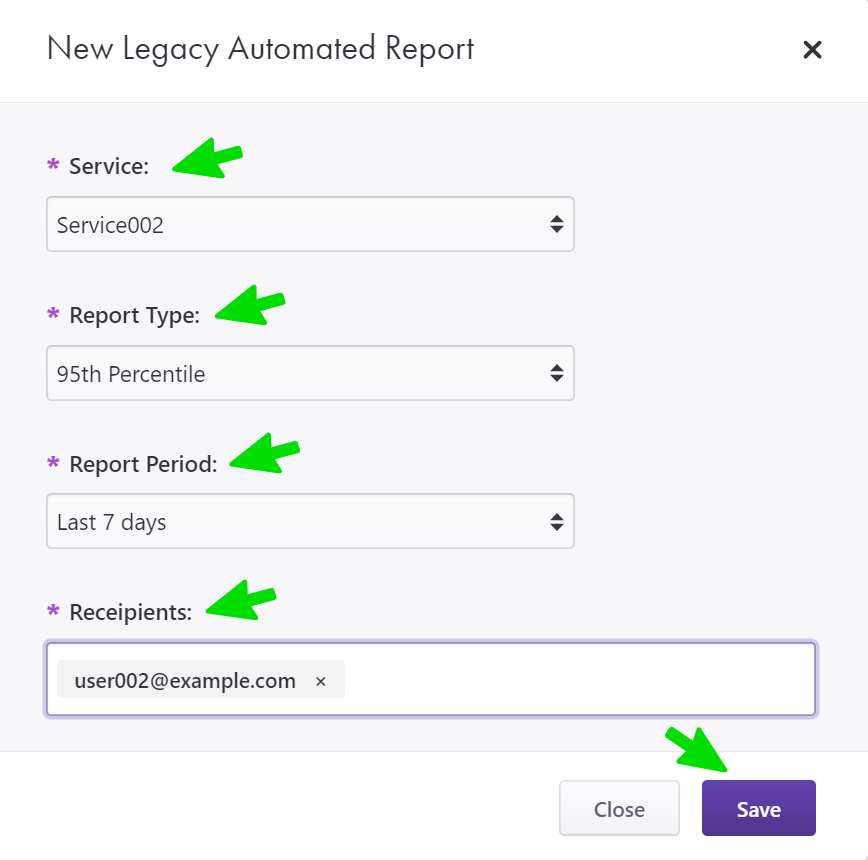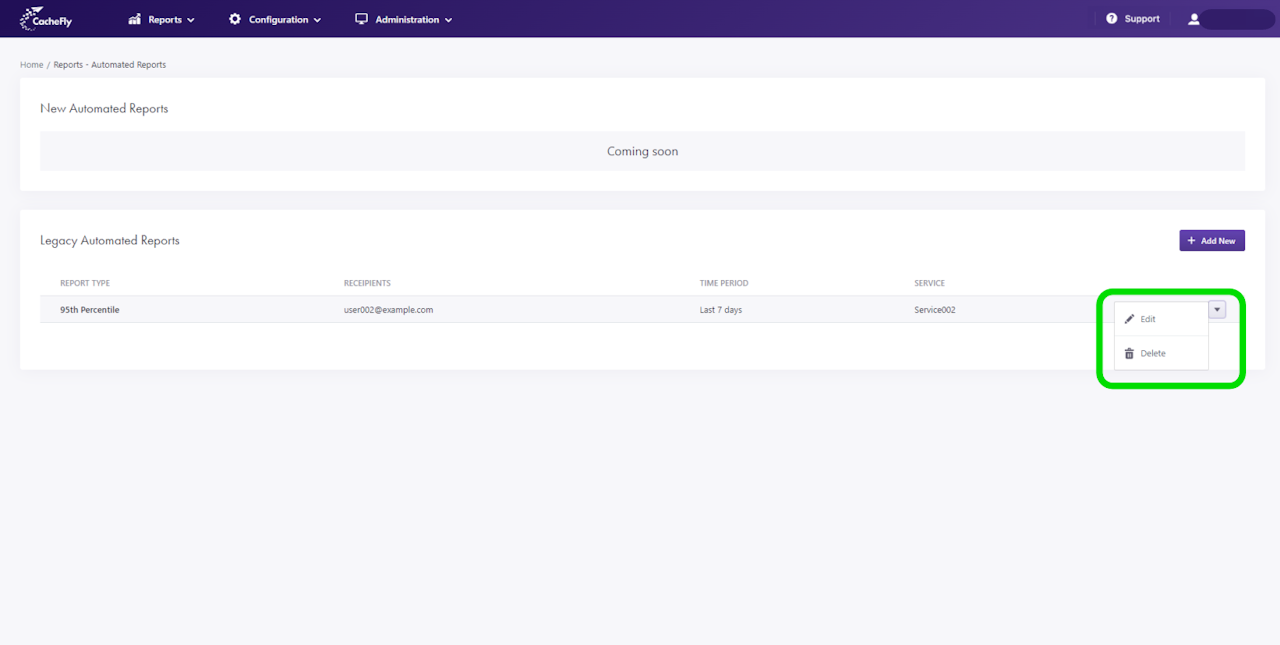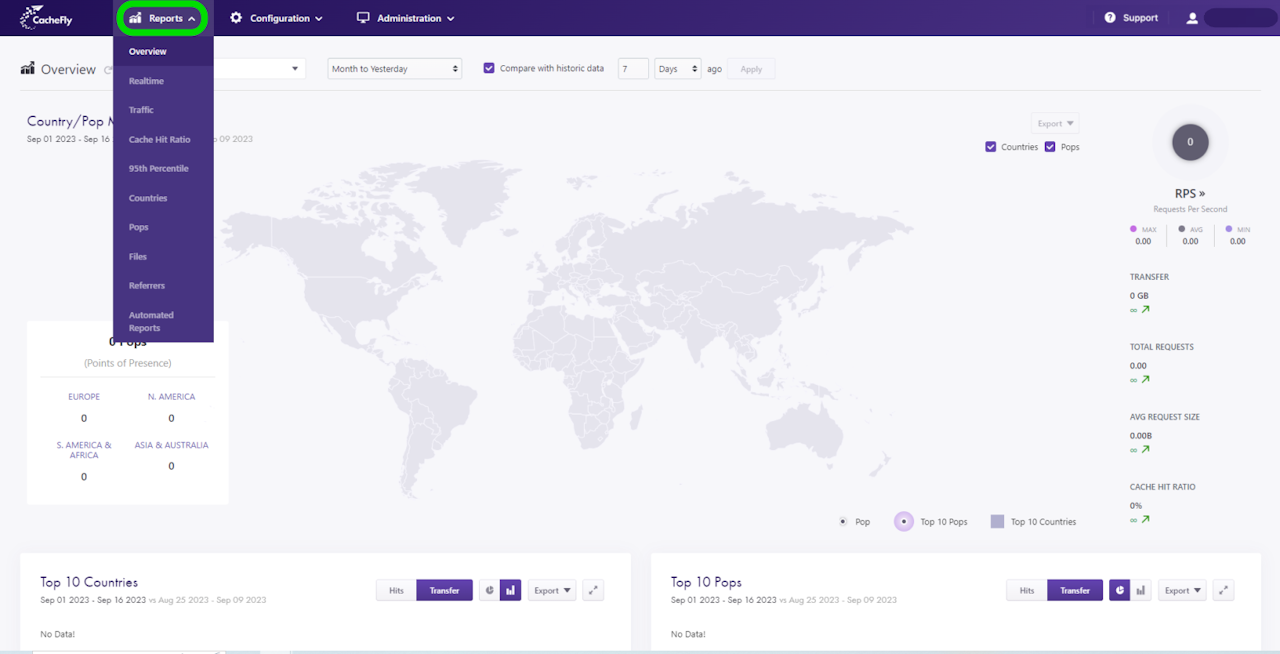
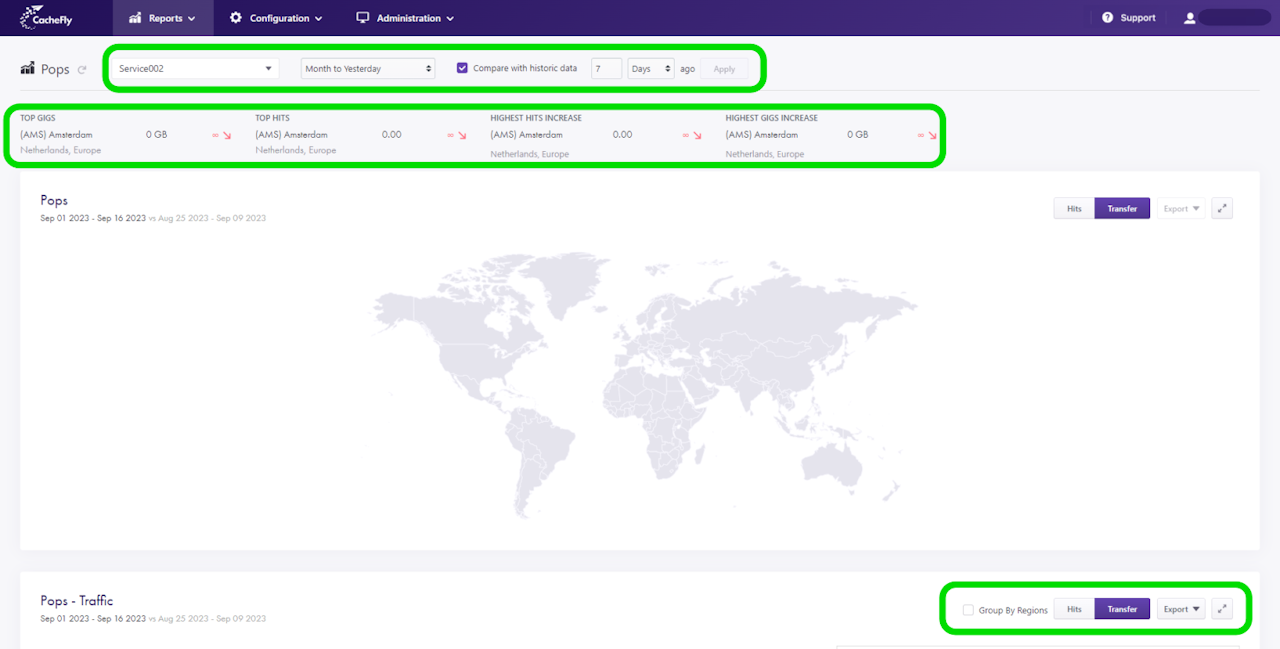
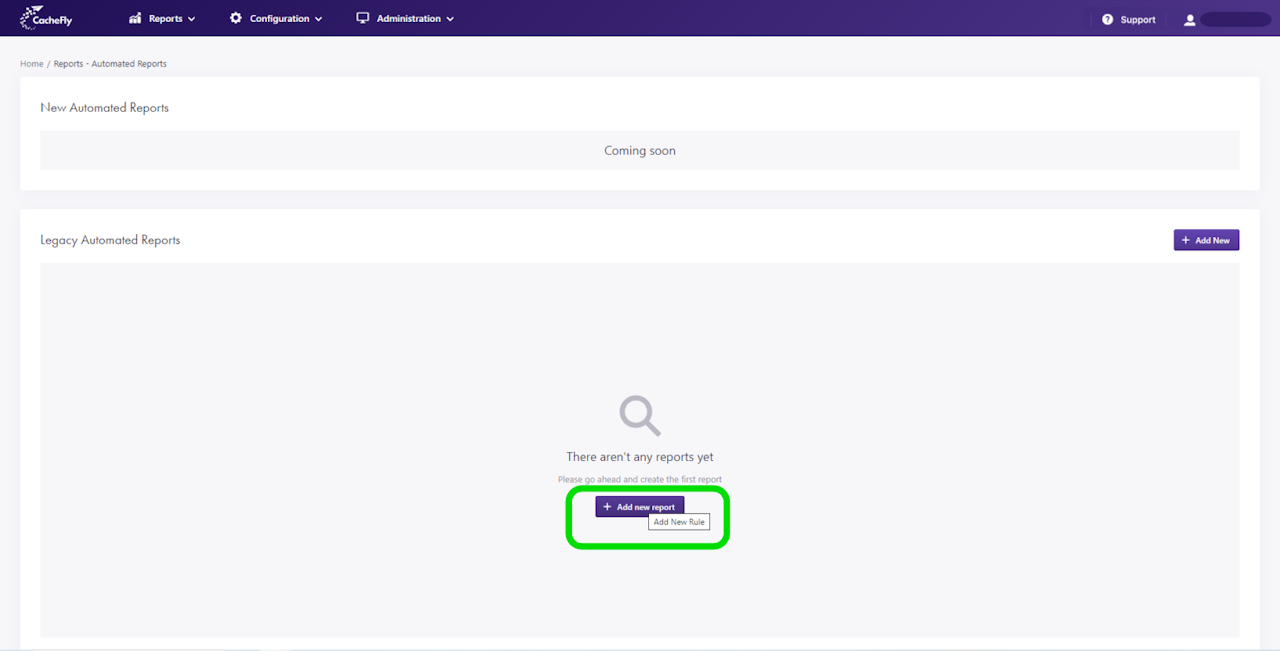
Introduction
The Reports menu in the CacheFly Portal gives you options to generate reports on usage statistics for your CacheFly services, globally or service by service.
You can thus analyze the data associated with your account and your services. For all services or for an individual service, you can generate an overview report or specific types of report, for instance, by country, POP, cache/hit ratio, and traffic. These reports are displayed on screen for immediate viewing and can be sent automatically to your email address.

Where to See Reports
To see reports:
Log in to the CacheFly portal
Navigate to the Reports top-level menu
Click on Reports to see a dropdown list of different options for reports.

Choosing Your Report
CacheFly offers you the following choices of report. These can be generated either as an overview of all your services or for a specific service.
Overview: A summary report with sections for Top 10 Countries, Top 10 Pops, Cache/Hit Ratio, and Traffic. Display choices include: by Hits or Transfers (countries, pops) and as a pie or bar chart, by Days or Hours (cache/hit ratio, traffic), export as PDF, CSV, XLSX, NUMBERS, ODS, TXT, RTF, or HTML, and display individual sections as fullscreen.
Realtime: In Requests Per Second for Realtime Global Requests, Realtime Hits, and Realtime Misses.
Traffic: By Days or Hours (according to section), by Hits or Transfers (according to section), export as PDF, CSV, XLSX, NUMBERS, ODS, TXT, RTF, or HTML, and display options including fullscreen. You can also compare with historic data for selected periods, and see Transfer, Total Request, and Average Request Size.
Cache Hit Ratio: Including Total, Hit and Miss, Cache Hit Ratio by Pop and Cache Hit Ratio, by Days or Hours, export as PDF, CSV, XLSX, NUMBERS, ODS, TXT, RTF, or HTML, and display options including fullscreen. See also What Constitutes a Hit.
95th Percentile: This is usage within 95% of all measured usage (may offer a more realistic appreciation of peaks in usage), also with Average usage, Minimum usage, and Maximum usage, export as PDF, CSV, XLSX, NUMBERS, ODS, TXT, RTF, or HTML, and fullscreen display of individual sections.
Countries: including Top gigs, Top Hits, Highest Hits Increase, Highest Gigs Increase, and selectionable Traffic by country or countries (optional grouping by region) and by Hits or Transfers with export as PDF, CSV, XLSX, NUMBERS, ODS, TXT, RTF, or HTML, and fullscreen display option.
Pops: (similar to Countries report but for POPs), including Top gigs, Top Hits, Highest Hits Increase, Highest Gigs Increase, and selectionable Traffic by POP or POPs (optional grouping by region) and by Hits or Transfers with Export as PDF, CSV, XLSX, NUMBERS, ODS, TXT, RTF, or HTML, and fullscreen display option.
Files: including Average request size, Total file requests, Total file transfer, Top Files - Hits, Top Files - Traffic, and Files (listing), Export as PDF, CSV, XLSX, NUMBERS, ODS, TXT, RTF, or HTML, and fullscreen display of individual sections.
Referrers: including Top Referrers - by Site (by Hits or Transfers), Top Referrers - by URL (by Hits or Transfers), Referrers by Site (listing), Referrers by URL (listing), Export as PDF, CSV, XLSX, NUMBERS, ODS, TXT, RTF, or HTML, and fullscreen display of individual sections.
You can also create Automated Reports.

Creating Automated Reports
To create an automated report (a new Legacy Automated Report, at this time), click on the Automated Reports menu item in the top-level Reports menu.
In the screen that appears, click the + Add New button to create your report by specifying the following.
Service: Choose from your currently defined CacheFly services
Report Type: Besides offering several of the reports described in Displaying Your Reports, additional report types of 404 by File and 404 by Referrer are available (see also HTTP Status Codes used by CacheFly)
Report Period: Choose between Yesterday, Last 8 Days, and Last Month
Recipients: By default, the email address declared in your CacheFly user profile is already entered here. You can also modify this email address and add others.
Then click the Save button to create your automated report.
Your new Legacy Automated Report will appear in the list of automated reports, where you can also edit or delete it at your option.

